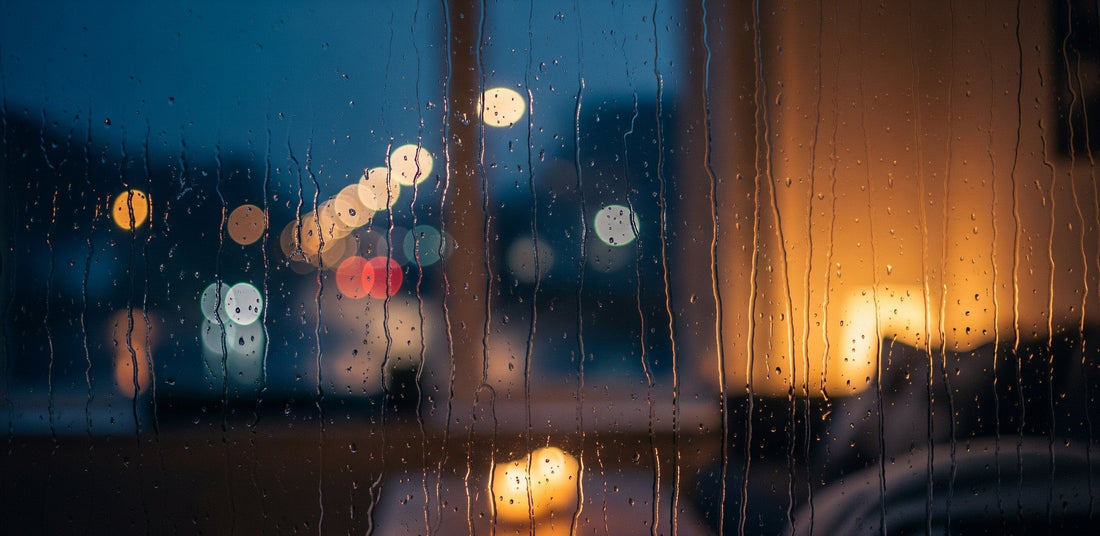
How Rain Sounds Help You Relax and Sleep Better
Share
There’s something timeless about the sound of rain. From the steady rhythm of droplets against a window to the low rumble of distant thunder, rain sounds have an uncanny ability to settle the mind. It’s no surprise that “10-hour rain sound” videos rack up millions of views on YouTube and streaming platforms. People aren’t just seeking background noise—they’re reaching for a proven tool for relaxation, focus, and sleep.
Why Rain Sounds Work So Well
The appeal of rain sounds goes deeper than nostalgia. Scientists explain their calming effect using a concept called pink noise. Unlike white noise, which spreads energy evenly across all frequencies, pink noise is weighted more toward lower frequencies. This makes it sound softer, warmer, and less harsh to the ear. Rain naturally produces pink-noise-like patterns: random yet steady, with a balance of highs and lows that our brains interpret as soothing rather than irritating.
In practical terms, rain sounds mask disruptive noises—traffic outside, a neighbor’s footsteps, or the hum of electronics—while creating a sense of continuity. The brain doesn’t need to “track” the sound of rain the way it does with music or voices. Instead, it allows attention to fade, making it easier to drift into sleep or enter a state of calm concentration.
Pink Noise vs. White Noise
While both pink and white noise are popular, the difference is crucial:
- White Noise – Contains all frequencies at equal intensity. Think of the hiss from an old TV set. Effective at masking external noise but often too sharp for long listening sessions.
- Pink Noise – Emphasizes lower frequencies. Softer, more natural, and closer to how we perceive everyday environmental sounds, including rainfall and waves.
Studies suggest pink noise may even enhance deep sleep. A 2017 experiment published in Frontiers in Human Neuroscience found that exposure to pink noise during sleep boosted memory consolidation by improving slow-wave brain activity. In other words, listening to rain sounds doesn’t just make it easier to fall asleep—it may help you wake up feeling more refreshed.
The Rise of “10-Hour Loops”
Why ten hours? It’s not an arbitrary number. Many people want uninterrupted sound through the night or across an entire workday. Instead of short recordings that stop after 30 minutes, looped audio ensures consistency. Platforms like YouTube, Spotify, and dedicated sleep apps now host countless variations—gentle drizzle, thunderstorms, rainforest downpours—tailored to different tastes.
Psychologically, knowing the sound won’t end helps the brain fully let go. A looping track means you won’t be jolted awake by sudden silence in the middle of the night.
Best Uses for Long Rain Recordings
Rain sounds can be surprisingly versatile. Here are some of the most common scenarios:
- Sleep – Rain helps mask irregular night noises (like distant traffic) that might otherwise cause micro-awakenings.
- Study and Work – Creates a cocoon of sound that helps filter out distractions and makes focus easier.
- Meditation – Works as a neutral background for mindfulness, preventing silence from feeling uncomfortable.
- Relaxation – Rain sounds pair well with reading, yoga, or even taking a bath, offering instant atmosphere.
Adding Technology to the Experience
The beauty of rain recordings is that they don’t demand high-end equipment, but thoughtful playback choices enhance the experience. For example:
Bluetooth Speakers
One of the most practical ways to enjoy rain sounds is through Bluetooth speakers. Place one on a balcony, by the bathtub, or near a window to blend real and recorded ambiance. Many of these speakers support 10+ hours of playback on a single charge, making them perfect companions for all-night loops.
Low-Profile Sleep Earbuds
Low-profile sleep earbuds or soft fabric headbands with integrated flat speakers are excellent alternatives. These are designed for comfort during rest, allowing you to drift off to gentle whispers or ambient sounds without pressure on your ears, even if you roll over.
Building a Personal Rain Sound Routine
Experimentation is key. What’s soothing for one person may feel distracting to another. Some people like pure rainfall; others prefer rain blended with additional textures. Common pairings include:
- Thunderstorms – Adds drama and intensity, useful for masking louder environments.
- Rain on Leaves – Softer, more natural, perfect for meditation or reading.
- Urban Rain – Includes distant cars and occasional footsteps, ideal if you miss the city atmosphere.
- Rain + Music – Combines ambient instrumentals with rainfall for a hybrid relaxation track.
To get the most from long rain recordings, integrate them into consistent routines. For sleep, start playback 20–30 minutes before bed as part of a wind-down process. For work, cue them when you sit down at your desk to help signal your brain that it’s focus time. Pairing rain sounds with consistent habits makes them more effective over time.
